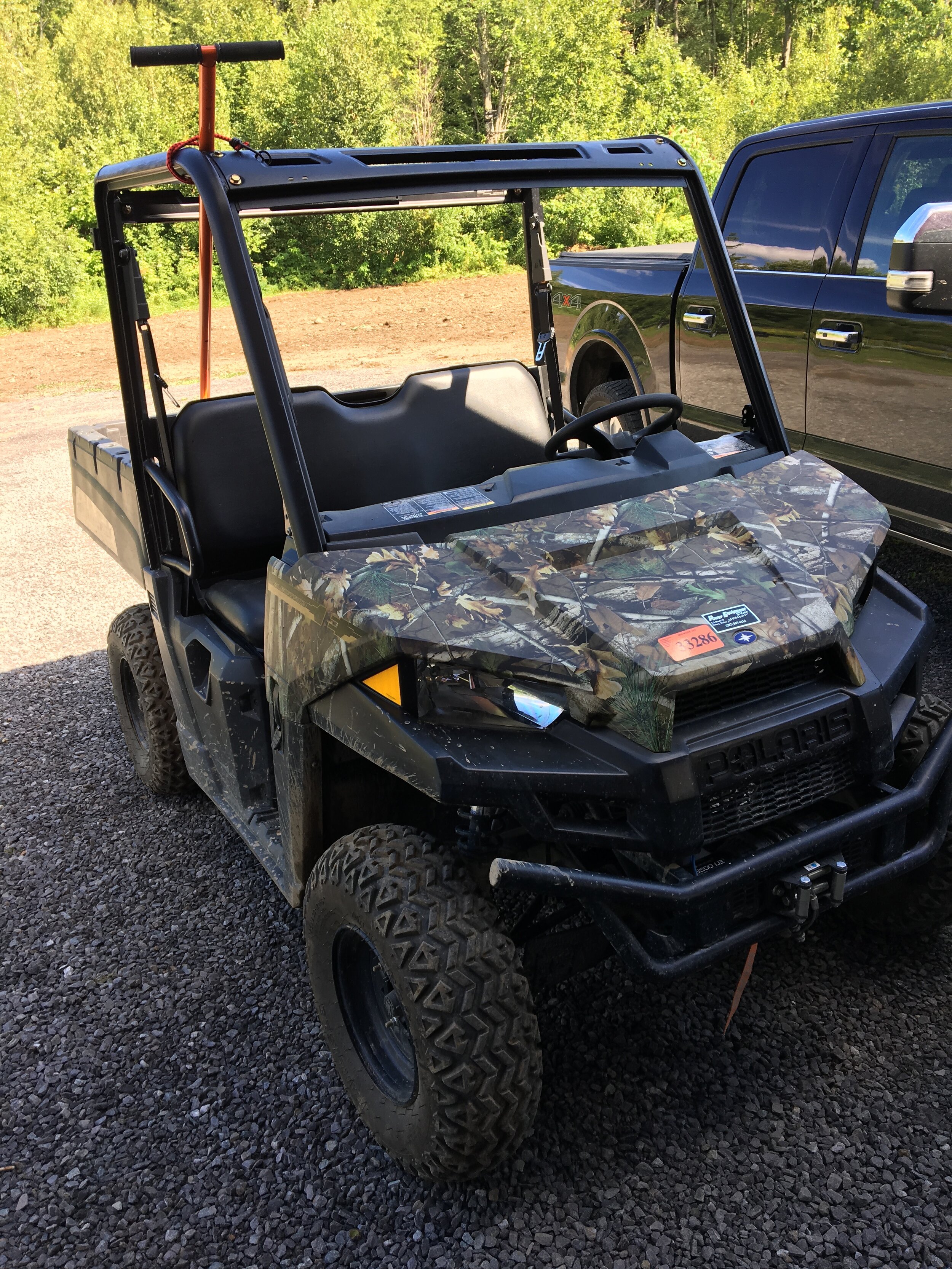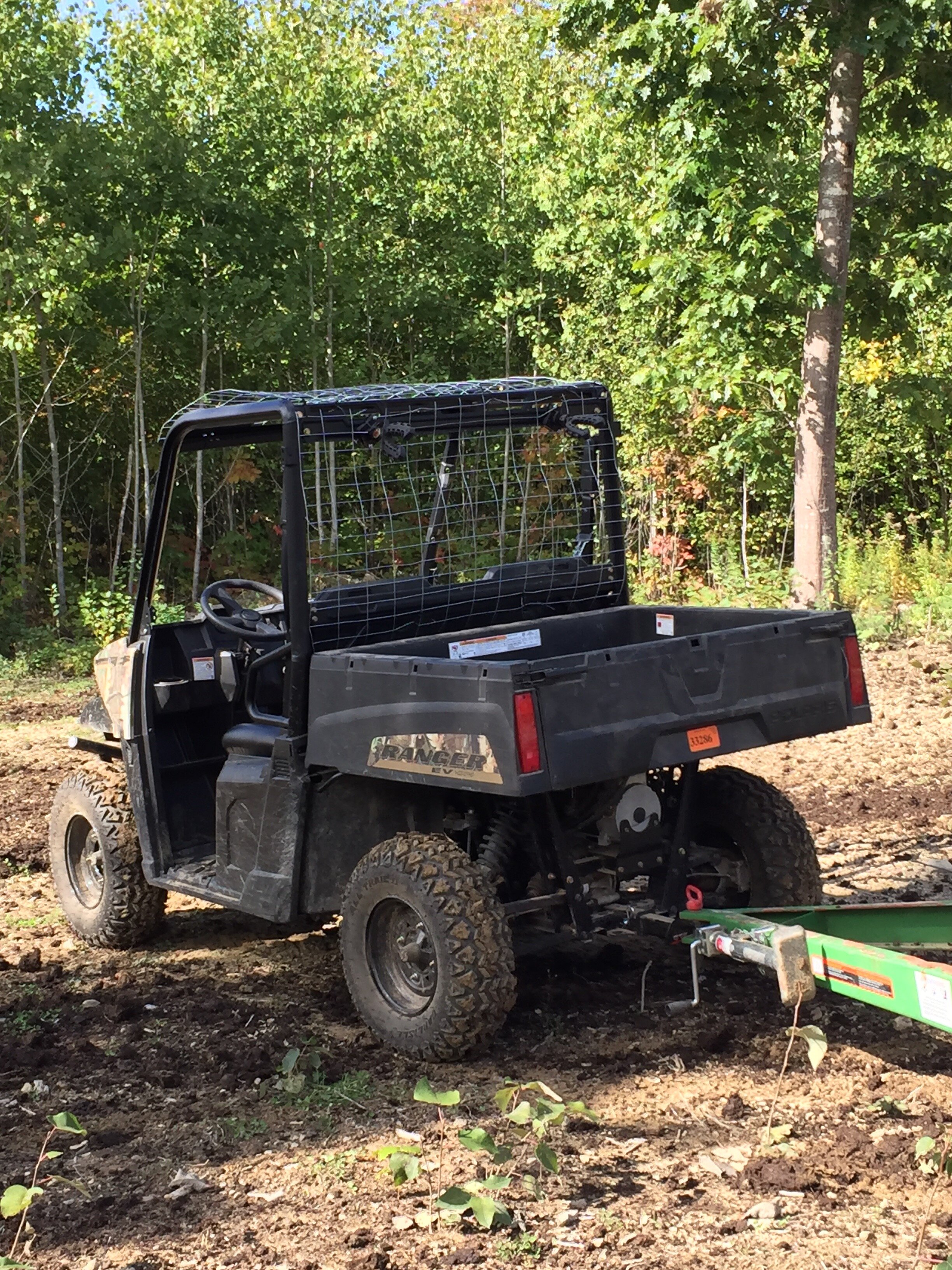Polaris Ranger EV Side-By-Side Electric UTV
Review Date: April 2020
Sometimes things just don’t turn out the way you thought they would. When I bought my first 61 acres of hunting land in 2014 I needed a side-by-side UTV to do chores, and I also needed to be able to get to my remote stands that are as much as a half-mile from where I park. I wanted to be able to haul gear and equipment to put up stands, cut trails, etc., but I also wanted to hunt as carefully and quietly as possible. I figured that an electric UTV would be the best option to solve both these problems.
So in early 2015 I purchased a Polaris Ranger EV. The Ranger EV is powered by an electric motor and eight lead-acid batteries. You can easily switch from low, medium, and high speed, and choose from one-wheel, two-wheel, or four-wheel drive. Polaris makes good ATVs, and this ranger rides nicely and has great traction and power. The one-wheel drive is the most efficient and fine on flat ground, while four-wheel drive allows it to go up anything. The Ranger EV is designed around the smallest size of Ranger, but it has seats for two and can do anything you want from a light-duty side-by-side. As a UTV, I think my only serious complaint is the legroom - I am six-three and I can just fit in it. I have to be careful not to hit my knees on the ignition or various switches on the dash. Polaris makes a good product.
I can’t remember what I paid for the Ranger EV, but I think it was somewhere around $11,000. I added a winch to the front, thinking that I would need to have one - I’ve never really needed it. I bought ATV load ramps because I wanted to carry the Ranger in the back of my F150 pickup, but when I tried that the weight nearly blew the truck’s tires - I got a refund for the ramps, and I now transport the Ranger on my 20-foot flatbed trailer. The batteries weigh a lot, making this a very heavy UTV for its size.
The Ranger has a standard receiver for a trailer hitch, and I have used it to tow a manure spreader - of course I needed to zip-tie a piece of wire fence to the Ranger to keep rocks in the manure from flying out of the spreader and hitting me in the head. I bolted a set of Kolpin Rhino Grips to the roll bar and use them to securely hold my bow when traveling to a hunting spot. The bed of the Ranger holds 1,000 lbs. and is designed to dump when you pull the locking handle. When I have two or more passengers in it, the extra people stand up in the bed, holding on to the roll bar Rat Patrol style - it’s fun.
My Ranger EV has functioned well, it’s held-up to a lot of abuse, and I haven’t been gentle with it. It rides well, climbs steep and rough trails, and is fairly quiet. It doesn’t make the noise or put out the exhaust that a regular UTV would, and therefore you can use it in the hunting season to go places without spooking deer the way a regular UTV would. I plug it in at my barn, which has 42 solar panels on the roof, so the cost to run the Ranger EV is low - no gas to buy.
Would I buy another EV? Do I wish I had purchased a regular gas-powered Polaris Ranger instead? No, I wouldn’t buy another EV and yes, I wish I had purchased a gas-powered Ranger instead - but that’s because my needs have changed, the e-bike revolution has solved my hunting access problem, and an unexpected cost appeared last year to hit me like a 2x4.
I was using the Ranger to access some of my remote stands, and that worked ok - I shot my first deer on my land doing just that. But after I got to know my land better, figuring out that I had some big bucks bedding on it, and exactly where they bedded, I realized that my Ranger EV was spooking the very deer that I was after.
I needed to find a better way to access my most remote stands and, because I couldn’t drive the Ranger on a logging road on the east side of my land, or the power line on the west side, I needed a different vehicle. I switched to a QuietKat Warrior electric mountain bike (see my review here) and no longer use the Ranger to hunt. The reason I chose the Ranger EV in the first place was quiet hunting access, and now that reason is gone.
Ok, so no big deal, right? I still need a UTV to do chores, so the Ranger EV is still fine, right? Not really. The batteries in the Ranger need regular maintenance, meaning that every month I need to pull all the caps and add distilled water. Doesn’t sound bad, except there are eight batteries and each has six fill holes, and they are crammed into a space that’s hard to access. Believe me, it’s a drag. I would much rather fill it with gas and take it to the shop for annual maintenance - of course the Ranger EV still needs to go to the shop every year or so for routine maintenance.
That’s not so bad - anything else? Oh yeah - after four years the batteries wouldn’t hold a charge and needed to be replaced. At a cost of about $4,000! Holy crap! The regular gas-driven Ranger is getting cheaper every year! Am I absolutely positive that I was filling the original batteries religiously and there was nothing I could have done to get another year out of them? Well, not exactly … but $4,000!
So take the cost of new batteries every four or five years, add to it the weight, and the regular hassle of checking and filling 48 freaking battery holes, and what do you get? A big fat wish that I had bought a gas-powered Ranger.




